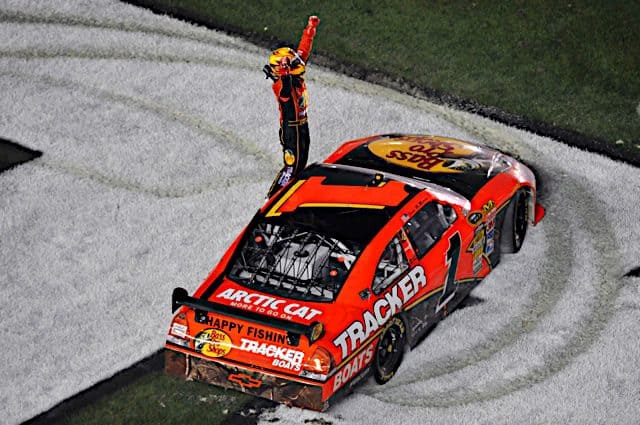After what felt like one of the shortest offseasons in recent memory, The Great American Race is upon us once again. While the Super Bowl of stock car racing would imply that only the best of the best could win, it’s still an auto race and anything can happen. Over the last 60 years the Daytona 500 has seen its share of upstarts convert with an upset victory, and they’re no less deserving than wins produced by the marque teams and drivers, taking home the Harley J. Earl trophy.
Let’s take a look back at some of the most surprising wins and great storylines of upset victories at The World Center of Racing.
1963: Tiny Lund
DeWayne “Tiny” Lund was anything but small in stature or courage. The Korean War veteran earned his first NASCAR Cup Series victory on the largest stage.
How he got the ride is another story in heroics. A sportscar race used to be part of Speedweeks at Daytona International Speedway, and 1961 winner Marvin Panch was driving a Maserati powered by a Ford engine. Panch was involved in an accident in the race and his car was engulfed in flames and he was unable to extricate himself. Lund happened to be watching the scene unfold and jumped into action. He scaled the fence and pulled a severely burned Panch from the wrecked exotic.
Panch insisted that Lund fill in for him in the Wood Brothers No. 21 Mercury for the 500. Lund managed to stretch out a win on fuel mileage, as Fred Lorenzen had to make a late race pit stop. In addition to the winner’s trophy, he was also awarded the Carnegie Medal of Honor for saving Panch’s life.
1964: Richard Petty
I know what you’re thinking; how is The King with his seven Daytona 500 wins an upset winner? Given the teething problems with the new 426 Hemi engine, it was a miracle they made it all 500 miles.
While Richard Petty won many races before the 1964 season, the victories occurred at the usual suspects of short tracks that made up the series at the time: Martinsville Speedway, North Wilkesboro Speedway, South Boston Speedway and the like. For 1964, the Chrysler corporation was intent on making Mopar the brand to beat on the new high-banked superspeedways that were set to become a fixture in the sport. The initial block castings had a metallurgical flaw, which required all its existing engines to be scrapped for new blocks. It wasn’t until January that the factory had enough engines on hand to start distributing them. This was at a time when there…
Click Here to Read the Full Original Article at …

